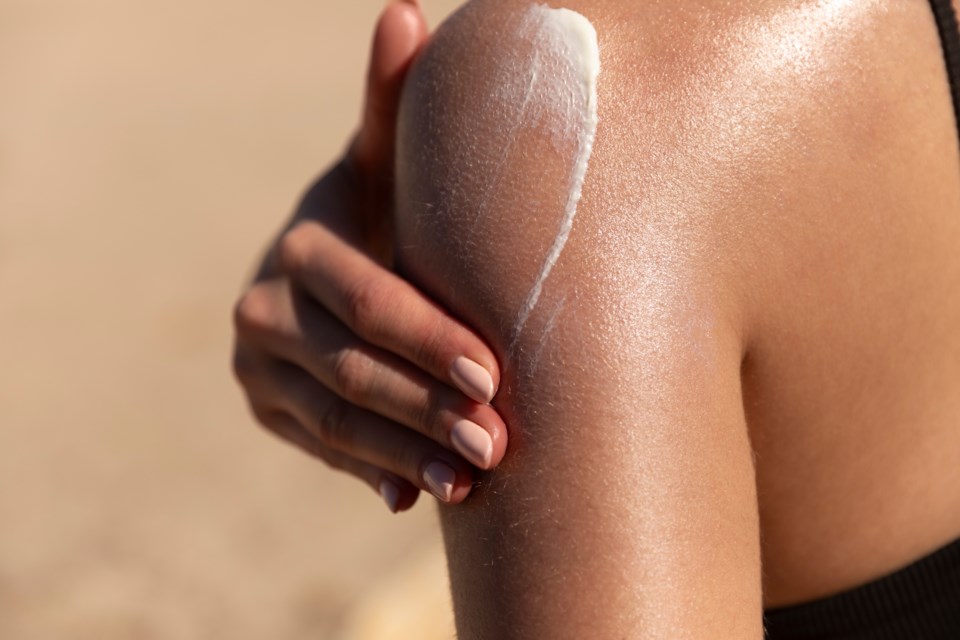Humans have a deep connection to the sun.
Ancient Egyptians worshipped Ra, the sun god. Sun was the source of life, power and energy, light and warmth and it caused crops to grow. Many cultures and traditions have honoured the sun and still do today. In the future the sun will play a major role in helping to end our dependence on carbon-based fuels. There’s much to celebrate in that.
May is Sun Awareness month so let’s talk sun!
Sunlight is a general term for the electromagnetic radiation emitted by the sun also known as solar radiation. Only half the solar radiation that reaches the Earth is visible light. Here’s the problem – it’s the invisible light, the ultraviolet (UV) radiation that is dangerous to humans.
UV is classified as 3 primary types: UVA, UVB and UVC.
Why does UV light burn? Do all types burn?
The earth’s ozone layer holds the key.
- UVC is the most dangerous but is completely blocked by the ozone layer (fun fact - UVC is used to kill COVID-19!)
- UVB is mostly absorbed by the ozone layer, only 5% reaches the earth
- UVA is minimally absorbed by the ozone layer, 95% reaches the earth
Even though UVB is only 5% of the UV that reaches the earth, it causes most of the sunburns. Why? UVB is a shorter wavelength and higher energy so it quickly burns the epidermis of the skin and can directly damage DNA in skin cells. UVB is responsible for most skin cancers including the deadliest type – melanoma.
While UVA can cause some skin cancers, its longer wavelength penetrates deeper into the dermis principally causing premature aging and wrinkling. UVA is much slower to cause burns.
May is also Skin-Cancer Awareness month.
It’s clear that UVA and UVB radiation is the culprit in causing skin cancers and skin damage so how do we best protect ourselves?
- avoid direct sun between 10am and 4pm
- burns happen on a cloudy day too!
- when sun-exposed wear clothes to protect you skin and sunblock on exposed skin (face/neck/chest most commonly)
- UV radiation penetrates the eyes and can cause corneal damage, cataracts and macular degeneration; wear a hat and UVA/UVB blocking sunglasses
But what if you want to be out in the sun? Summer in Canada is so short! Cuba in winter is so nice! Creams will be required!
Sunscreens penetrate the skin and contain chemicals that absorb harmful UVA/UVB rays. Sunblocks literally block UV rays by forming a physical shield typically with minerals such as zinc or titanium.
Sunblock is not absorbed which is why it is the preferred choice for children and infants. Whatever product you use, make sure it has full UVA/UVB protection. Sun protection factor (SPF) indicates the level of protection. SPF 30 or greater is recommended (SPF 30 blocks 97% of UVB, SPF 50 blocks 98%).
The SPF level is less important than remembering to apply enough cream and reapply often especially if you are swimming, sweating or in direct sun for hours.
When it comes to skin cancer – there are 3 common types:
- basal cell cancer
- squamous cell cancer
- melanoma
Be alert to the ABCDEs of skin lesions.
Look for asymmetry, border changes, varying colour in the same mole, diameter greater than 6mm and evidence the spot is evolving or changing over time.
Guelph is fortunate to have a skin cancer screening clinic where your entire body can be assessed, mapped and analyzed with specialized photographic equipment and dermoscopy. Early diagnosis is critical especially for melanoma. Regular screening leads to early detection which is critical for skin cancer.
Remember 80% of visible aging and skin cancer is caused by exposure to the sun!
When it comes to our love, love relationship with the sun remember that an ounce of prevention is worth a pound of cure.
To learn more, visit artmed.ca or email [email protected].
